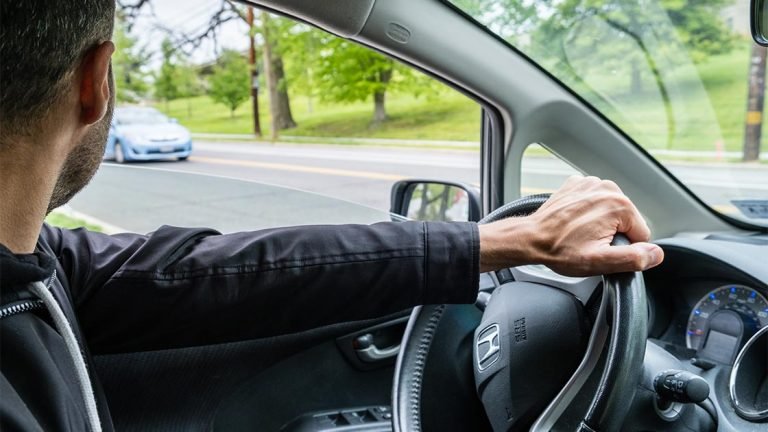Safety technologies provided by modern-day vehicles are not an absolute alternative to driver attention, but they play an important role in preventing accidents. The standard features that can be found in cars can vary with model and brand. However, some advanced features are available as upgrades for vehicles as well.
So, car owners can check the vehicle’s manual and research online to determine which features they can get as standard and which are available. Here are some safety technologies that are necessary for preventing accidents and injuries.
Automatic Emergency Braking Systems
This safety technology primarily focuses on rear-end collisions, which account for almost one-third of accidents. The systems comprise two kinds of brake assistance, and each has its purpose. Crash imminent braking detects a possible crash and alerts the driver. Moreover, it slows down the car or brings it to a complete stop if the driver does not respond quickly.
Read More:- Luxury Cars Are Spreading Through The Streets of San Francisco
The other technology is the dynamic brake support that comes into effect when the brakes are applied the brakes. It assists the driver in braking, but it may not be strong enough to prevent the accident on its own. It is important to find out which technology is supported by your vehicle.
Backup Cameras (safety technology)
Cameras help car drivers maneuver the vehicle better to avoid crashes, especially when they are reversing. Backup camera technology displays the situation at the rear of the car.
If there is a pedestrian, cyclist, or any obstacle, the driver can easily avoid it without crashing. The camera turns on automatically every time the driver begins to reverse the car so that the area behind it is visible. It can also help with the visibility of blind spots, which can be tricky otherwise.
Blind Spot Detection
Blind-spot monitoring is now a standard safety technology in vehicles that helps motorists navigate blind spots. This technology can be beneficial in larger vehicles such as SUVs, as they have larger blind spots. The technology enables the driver to change lanes safely by ensuring no cars are in their blind spots.
Some versions only alert the driver when there is a vehicle in their blind spot when their turn signal is on, whereas others give continuous updates. The alerts can be through the vibration of the steering wheel. Alternatively, a warning light inside or near the side mirrors.
Lane Departure Warnings
Some safety technologies rely on radars and cameras to detect the vehicle’s movement and alert the driver if they sense any anomaly. The lane departure warning uses cameras to monitor the markings on the road and alert the driver if the vehicle is leaving the lane without turning on the turn signal.
The alerts come through the turn signal turning on or, in some cases, an audio alert. The safety technology keeps distracted driving in check, which can otherwise lead to accidents. A similar technology called lane keep assisting warns the driver and takes over by gently steering the car back into its lane if the driver is not taking action.
Forward Collision Systems
This system assesses the distance between the car and the vehicle in front, and if it detects an imminent collision, it controls the car’s speed to avoid the collision or minimize the impact. The system uses cameras or radars to check the road ahead of the vehicle.
Adaptive Headlights
Adaptive headlights change the direction of the headlights to enhance visibility in low-visibility conditions. While standard headlamps position the light in a fixed direction, adaptive headlights assess the steering wheel motion and adjust the light accordingly.
So, when drivers are driving on a dark road and are about to turn. The corners will illuminate to know what is ahead of them. This new technology plays an important role in minimizing and preventing accidents that can be fatal.
Electronic Stability Control
This breakthrough technology prevents the vehicle from slipping out of control of the driver even when driving in challenging conditions. The technology reduces the power to the engine by applying brakes to the tires of car in case of a run-off accident. The technology prevents the vehicle from rolling over or crashing.
Vehicle Communication (V2V)
This advanced safety technology is used for self-driving vehicles. Currently, autonomous cars are relatively new and rare, but the technology can be helpful for such vehicles. The use of GPS and sensors in automobiles can detect the movement of other vehicles, pedestrians, or cyclists on the road.
Traction Control Systems
Slippery roads make it challenging to maintain control of the vehicle, and motorists have to put extra effort into assuring safety. With traction control systems, the vehicle’s wheels can prevent spinning when the driver accelerates. The safety technology can assist in avoiding accidents by detecting vehicle instability.
Bottom Line
Knowing about the latest safety technologies that can help motorists in life and death situations is essential. It can be helpful to get such technologies, but drivers need to make sure that they are vigilant while driving. In the unfortunate event of a crash, consulting an experienced car accident attorney can help you understand your legal options and protect your rights.


